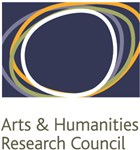Lexical splits
Project Overview
Project
Lexical splits
Project members:
Prof Greville G. Corbett
Dr Matthew Baerman
Dr Timothy Feist
Period of award
Sep 2016 – Aug 2019
Funder:
Arts and Humanities Research Council
Many languages express changes in grammatical meaning through changes in word form, a process known as inflection. Often this is perfectly transparent: adding -s to a verb like ‘talk’ gives the 3rd person singular present tense (s/he talks), and adding -ed gives the past tense (s/he talked). But sometimes the process is more involved, as with ‘go’, whose past tense ‘went’ seems to be a different word entirely. We say here that the word is “split” between two distinct stems. But splits can involve much more than just different forms. Russian verbs, for instance, display a present–past split in the categories of meaning that the forms represent. The present tense marks person, while the past tense marks gender, so that verbs are split in their use of the person and gender features.
By taking a more abstract view of splits we start to notice patterns that are not apparent when looking at the individual phenomena which define splits in isolation. This way of approaching morphological and morphosyntactic irregularity holds open the promise that many diverse instances of irregularity result from combinations of a few basic patterns. We assume a working typology which identifies four binary criteria according to which splits may be distinguished:
1. Structure – does the split involve the forms of the word (e.g. go~went) or the categories of meaning expressed (e.g. person versus gender)?
2. Arrangement – does the split correspond to distinctions that already play a role in the syntax, semantics or phonology of the language, or is it arbitrary?
3. Regularity – does the split affect all words of the same class, or just a few?
4. Relevance – does the split have an effect on anything other than the word itself (e.g. how it interacts with other words)?
Combining these parameters yields sixteen logically-possible split types. Our pilot study shows that each is attested, but the distribution is dramatically skewed, suggesting there are some inherent constraints on possible configurations of splits.
The theoretical implications of adopting our approach are exciting: different models of the architecture of grammar suggest that different types of split should predominate, and that only certain combinations of splits (multiple splits) should be possible; our typological framework allows us to test some of these wide-ranging hypotheses about the organization of inflectional structure in an empirical manner. Further, we would predict that splits which developed out of sound changes result in very different split types to those splits which were induced by changes in syntax or semantics. The thorough typological study we propose is designed to support or to disprove such hypotheses. At a more general level, our investigation of splits offers a novel perspective: accounts of grammatical structure have typically been compartmentalised, so we speak of syntax, of morphology, and of morphosyntax (the intersection of the two). But our approach cross-cuts these distinctions, and provides the means for classifying and analysing shared linguistic structures that operate at a more fundamental level.
In light of the diversity of splits across languages, this research will address the following questions to elucidate what constitutes a possible word:
– What is the typological, genetic and geographic distribution of split types across the world’s languages?
– Are there correlations between split types and the way they are manifested?
– Which of the sixteen types of lexical splits can co-occur and what are the restrictions on how they interact with each other? (That is, what types of multiple splits can there be?)
– How do multiple splits arise and how stable are they over time?


